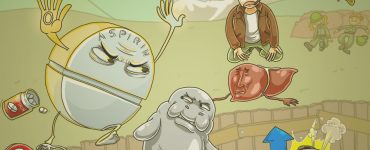Research Reveals the Mnemonic Power of Pictures
‘A picture is worth a thousand words’ never rang truer than for studies on how the human memory functions. Many theories show the superiority of pictures over words in relation to information retention.
Dual-coding Theory
Allan Paivio’s dual-coding cognitive theory states that the creation of mental images enhances learning. Paivio inferred that learners could expand on learned material by creating verbal associations or visual imagery. Thus a concept is stored in the brain via two pathways, one for the verbal representation of the word and one for the mental image.
For medical students, they may remember a right ventricle based on both the sound of the two words and on the mental image of the first time they ever saw a left ventricle in real life. The words “right ventricle” are thus dual coded. A medical student could retrieve the item from his or her memory by associating it either with the sound of the word or the image of the actual ventricle or both.
Practical Applications
If associations between a word and an image are not available, such as when you are recalling a person whose name you have heard but whose face you have never seen, it is far more challenging to recall the word. This is a result of picture superior effect, which simply states the person who learns a concept by viewing pictures of it will recall that concept with better accuracy and ease than the person who learned it simply by its name.
This also explains why concrete concepts are easier to remember than abstract. People have a generic mental image for the concrete concept of an apple, but it is difficult to have a concrete image for an abstract idea like selflessness. Similarly, one might think a medical concept as complex as pulmonary valve stenosis would be nearly impossible to depict in retainable imagery. And it was, prior to Picmonic.
This is where Picmonic’s learning system reveals its value to medical students, who obviously need to remember all conditions, diseases and disorders associated with the right ventricle, not simply be able to recognize the organ. Picmonic turns complex conditions – as well as their mechanism of action, indications, side effects, treatment and more – into unforgettable graphics. In the process, an image is created for an entire set of related information. Quite literally, if someone asks a Picmonic user about pulmonary valve stenosis, he or she actually has a visual from which to draw information about the congenital defect.
Thus, based on dual-coding theory and the picture superiority effect, Picmonic users are far more likely to recall the information they need, first to pass USMLE Step 1 and then to save lives.
About the author: Jenna Lee Dillon writes about the topics that interest her most: food, women’s health, food, how to be a Super Brain Hero, food, travel, books and food. She was once called a Grammar Nerd and thought it was a compliment. Find her onGoogle+.













